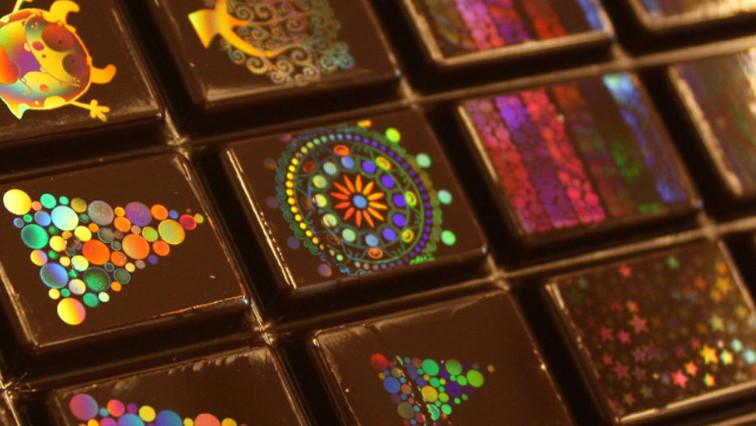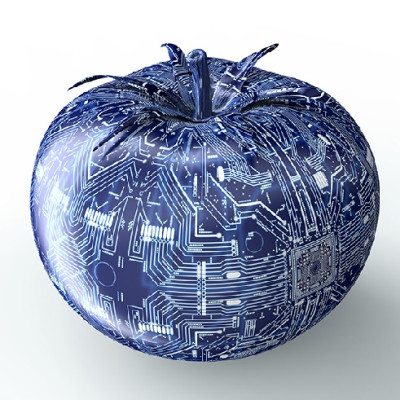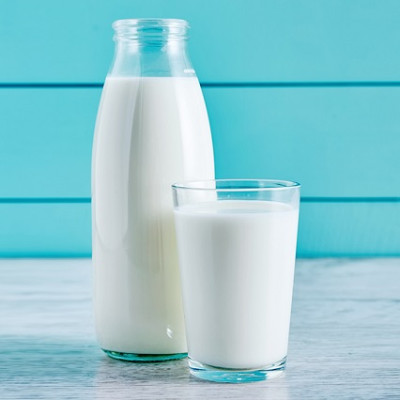Most holograms are imprinted with lasers onto metal surfaces, such as aluminum, but the materials aren’t edible. For foods, holograms made with nanoparticles have been proposed, but the tiny particles can generate reactive oxygen species, which might be harmful for people to eat.
In a different approach, food scientists have molded edible holograms onto chocolate, but the process only works for certain types of the confection, and a different mold is needed for each hologram design. Bader AlQattan, Haider Butt and colleagues wanted to find a safe, fast and versatile way to pattern edible holograms onto a variety of foods.
To develop their method, the researchers made a solution of corn syrup, vanilla and water and dried it into a thin film. They coated the film with a fine layer of non-toxic black dye.
Then, they used a technique called direct laser interference patterning to etch off most of the dye, leaving behind raised, nanoscale lines that formed a diffraction grating. When struck by light, the nanostructure diffracted the light into a rainbow pattern, with different colors appearing at different angles of viewing.
The team could control the intensity and range of colors by varying the spacing between lines in the grating or the sugar content of the corn syrup film. Before edible holograms are ready to hit store shelves, however, the researchers want to adapt the method to a food-grade dye that could replace the synthetic black dye used in these pilot experiments.
Read the original article on American Chemical Society (ACS).







